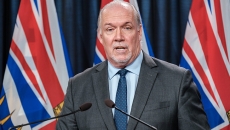Parliament's budget watchdog estimates the Liberals will spend more this year on a wage-subsidy program than expected, but less in 2021.
The Liberals estimated last month the program would cost $83.5 billion this fiscal year when taking into account take-up through the summer and its extension since the fall.
Finance Minister Chrystia Freeland's fall economic statement also estimated the program would cost almost $16.2 billion in the coming fiscal year that starts in April 2021.
Parliamentary budget officer Yves Giroux's office says in a report today that the figure for this year could be closer to $85.5 billion and nearly $13.9 billion next year.
On December 16, the PBO will release 3 Legislative Costing Notes:
— Parliamentary Budget Officer (@PBO_DPB) December 15, 2020
➡️ Supporting Jobs and Safe Operations of Junior Mining Companies
➡️ Canada Emergency Wage Subsidy (CEWS) – March 2020 to June 2021
➡️ Canada Emergency Rent Subsidy and Lockdown Support up to June 2021
The report says estimates about program take-up are subject to a degree of uncertainty about the path the pandemic will take and how it affects the economy overall.
The most recent figures for the program show the government has paid out just over $54 billion in subsidies designed to keep employees on payrolls at 368,240 companies.
The Liberals announced last month they would extend the wage subsidy into next year, and bring the amount it covers up to 75 per cent of business payroll costs, which had been a key ask from hard-hit sectors like tourism.
The fall economic statement also extended the business rent subsidy to mid-March, updating a program that had low take-up previously because the money flowed through landlords in the form of loans, which property owners showed little interest in taking.
The economic statement forecasted the revamped commercial rent-relief program will cost $2.18 billion this fiscal year.
Giroux estimates the cost to be just under $3 billion this fiscal year, and almost $1.6 billion next fiscal year.






